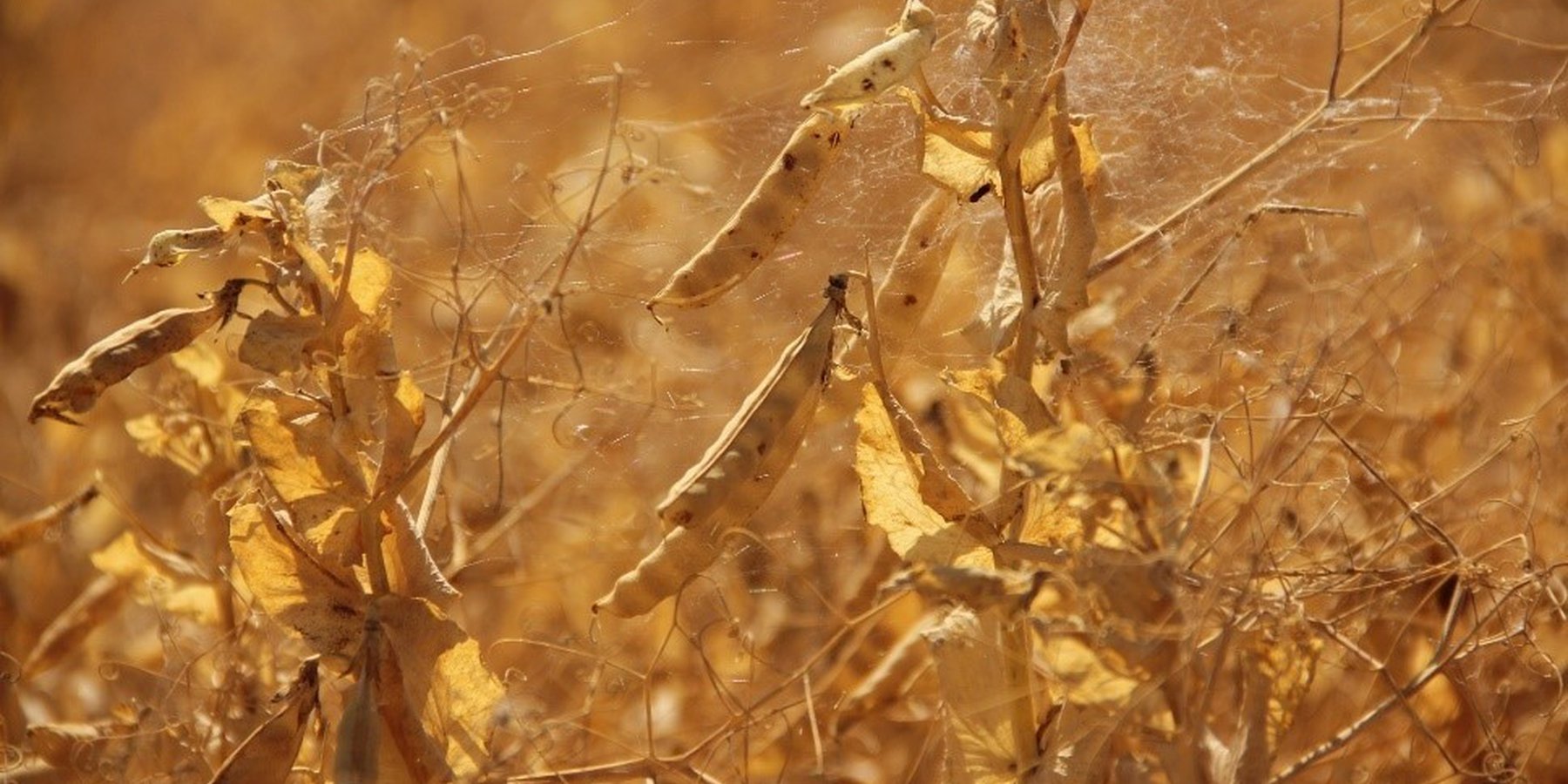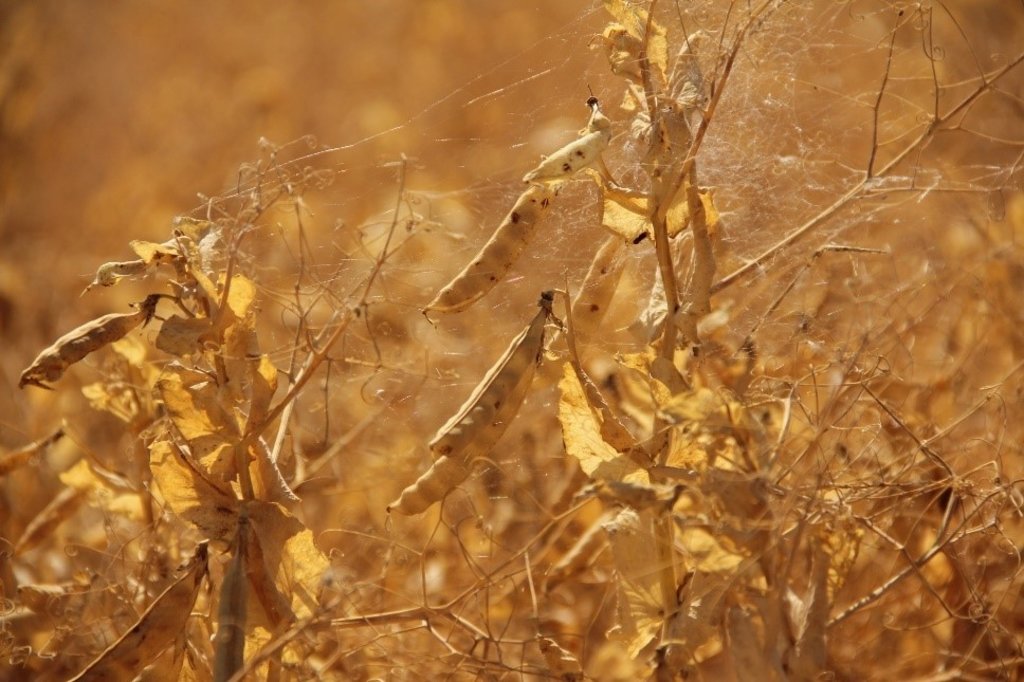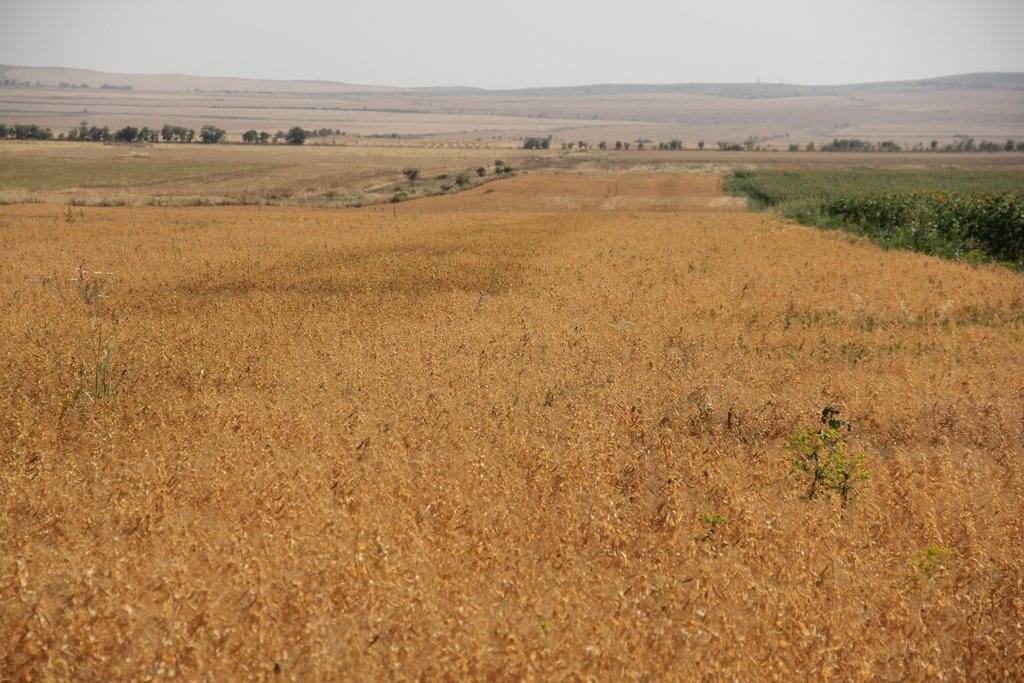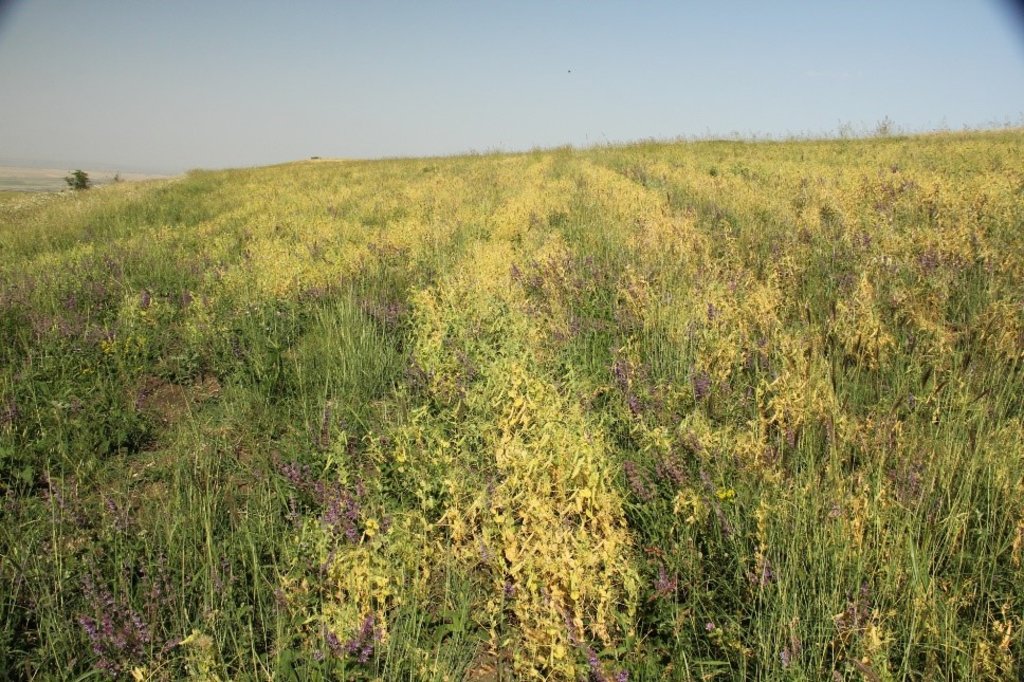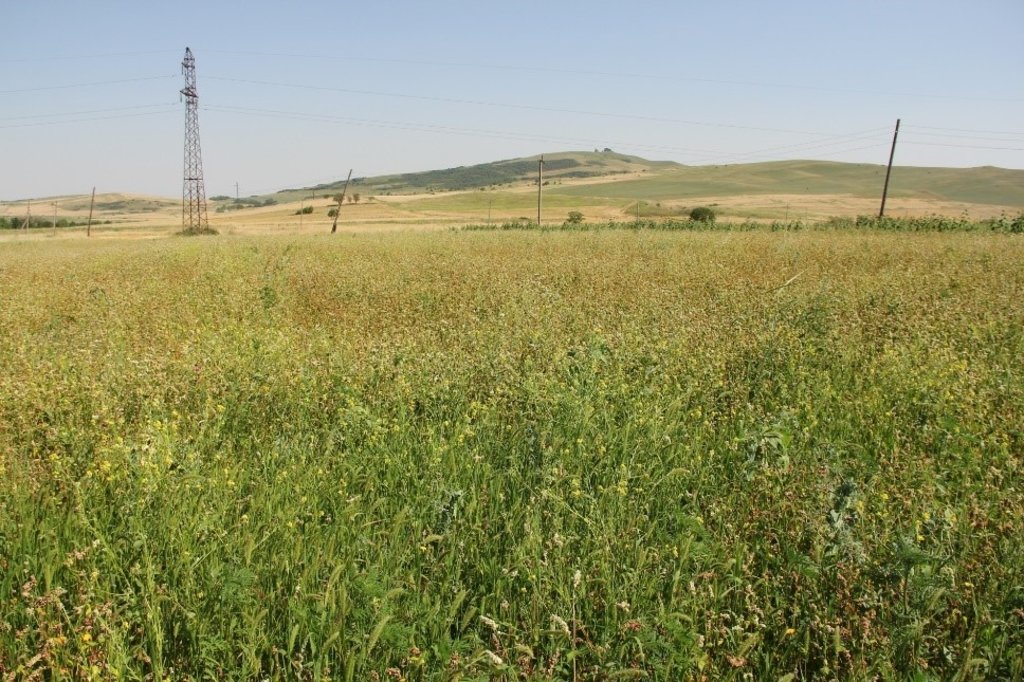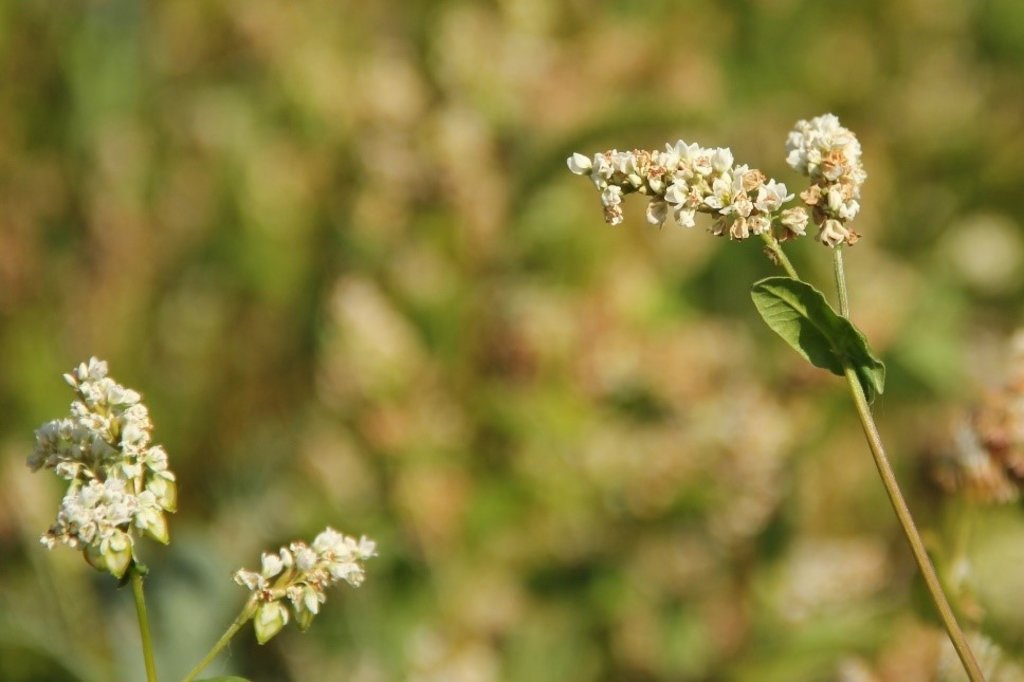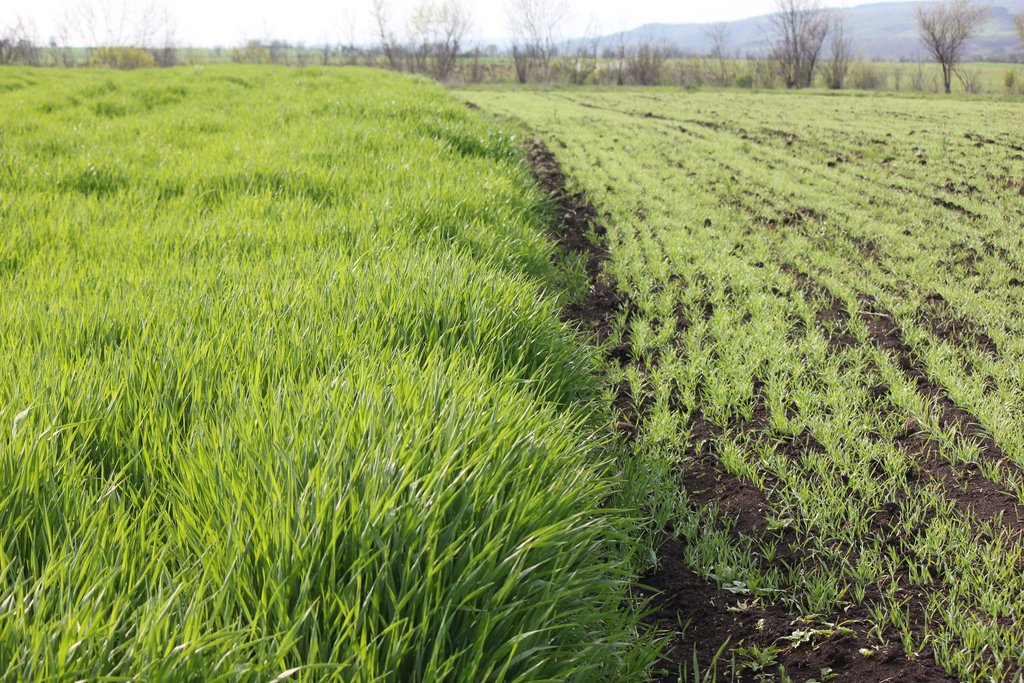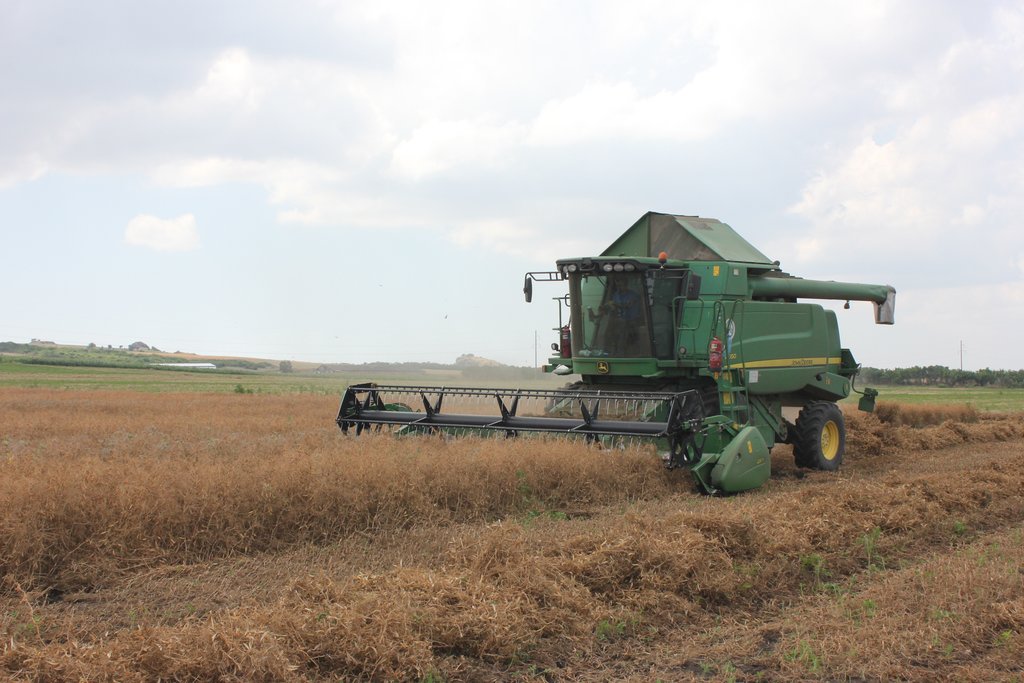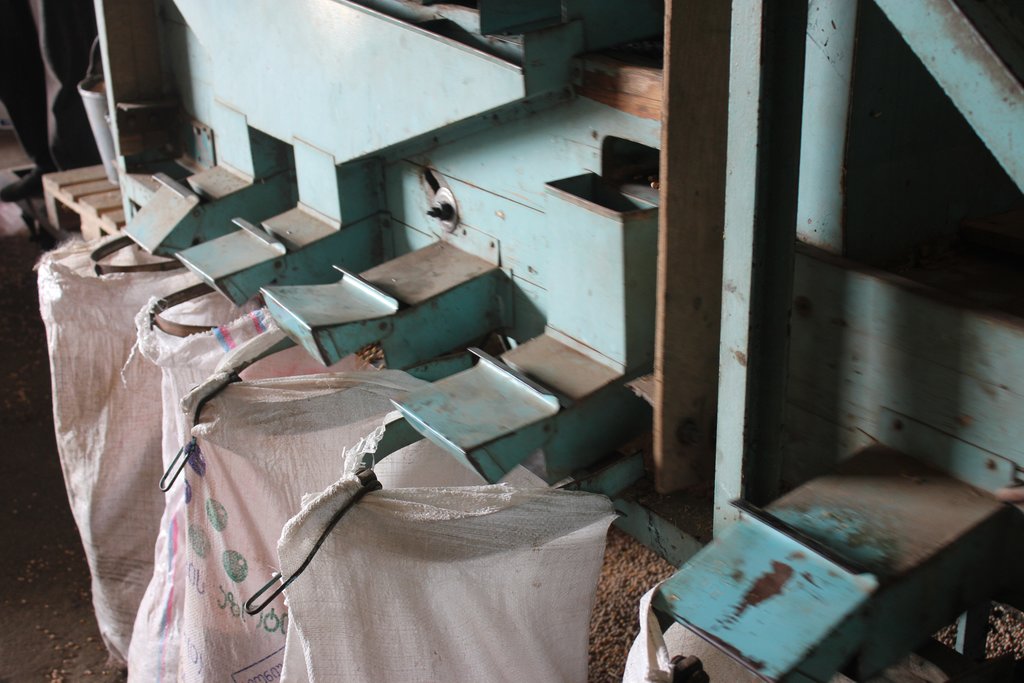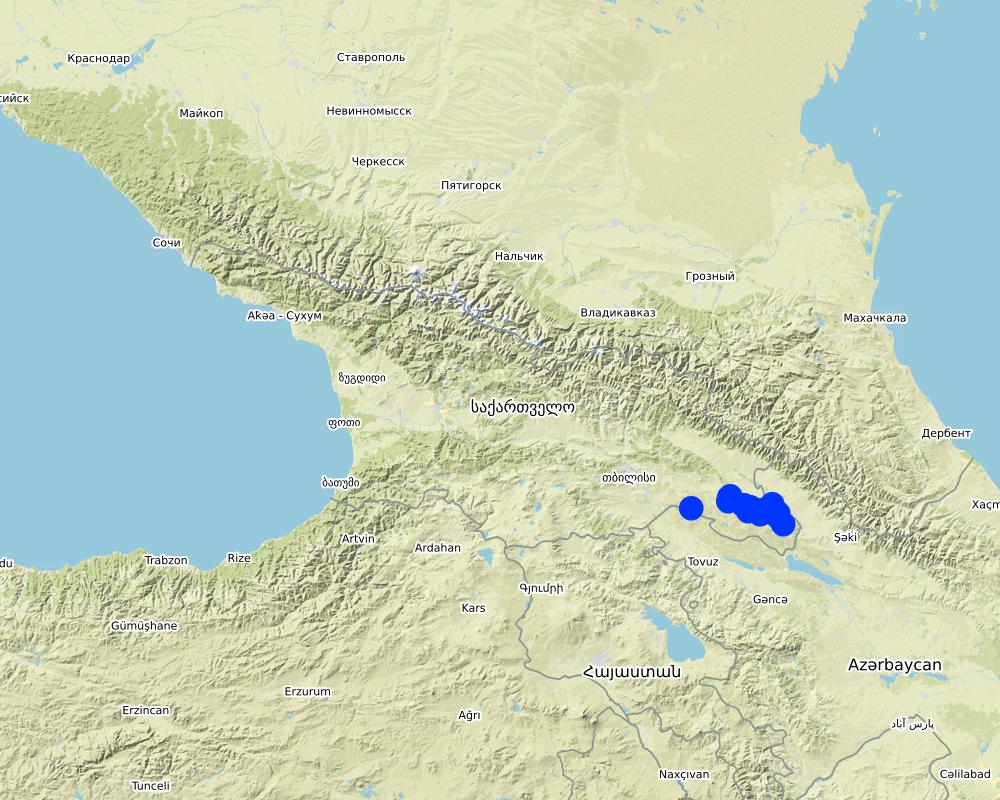Introduction of Crop Rotation [จอร์เจีย]
- ผู้สร้างสรรค์:
- การอัพเดท:
- ผู้รวบรวม: Hanns Kirchmeir
- ผู้เรียบเรียง: Kety Tsereteli
- ผู้ตรวจสอบ: Ursula Gaemperli
technologies_4275 - จอร์เจีย
ดูส่วนย่อย
ขยายทั้งหมด ย่อทั้งหมด1. ข้อมูลทั่วไป
1.2 รายละเอียดที่ติดต่อได้ของผู้รวบรวมและองค์กรที่เกี่ยวข้องในการประเมินและการจัดเตรียมทำเอกสารของเทคโนโลยี
co-compiler:
ชื่อของโครงการซึ่งอำนวยความสะดวกในการทำเอกสารหรือการประเมินเทคโนโลยี (ถ้าเกี่ยวข้อง)
Applying Landscape and Sustainable Land Management (L-SLM) for mitigating land degradation and contributing to poverty reduction in rural area (L-SLM Project)ชื่อขององค์กรซึ่งอำนวยความสะดวกในการทำเอกสารหรือการประเมินเทคโนโลยี (ถ้าเกี่ยวข้อง)
Regional Environmental Centre for the Caucasus (REC Caucasus) - จอร์เจีย1.3 เงื่อนไขการใช้ข้อมูลที่ได้บันทึกผ่านทาง WOCAT
ผู้รวบรวมและวิทยากรหลักยอมรับเงื่อนไขเกี่ยวกับการใช้ข้อมูลที่ถูกบันทึกผ่านทาง WOCAT:
ใช่
1.4 การเปิดเผยเรื่องความยั่งยืนของเทคโนโลยีที่ได้อธิบายไว้
เทคโนโลยีที่ได้อธิบายไว้นี้เป็นปัญหาของความเสื่อมโทรมโทรมของที่ดินหรือไม่ จึงไม่ได้รับการยอมรับว่าเป็นเทคโนโลยีเพื่อการจัดการที่ดินอย่างยั่งยืน:
ไม่ใช่
2. การอธิบายลักษณะของเทคโนโลยี SLM
2.1 การอธิบายแบบสั้น ๆ ของเทคโนโลยี
คำจำกัดความของเทคโนโลยี:
In the municipality of Dedoplistskaro, Georgia, 100 ha of land have been cultivated with peas on approx. 25 fields (each 1-10 ha in size). The introduction of peas as an alternative crop that is now used in rotation with wheat, helps to increase soil fertility sustainable and ecologically.
2.2 การอธิบายแบบละเอียดของเทคโนโลยี
คำอธิบาย:
Dedoplistskaro is located in the Shiraki Plain, in eastern Georgia, and consists of steppes, where grain crops are cultivated and livestock is grazed in the winter. The steppic soils are dominated by Chernozems and Kastanozems, the climate is warm and temperate and the small-scale land (2-5 ha) is in individual ownership. The labour including plowing, seeding and harvesting is fully mechanised, the machines are mainly borrowed from agricultural machinery cooperatives and less often from private machinery suppliers. For the inhabitants of Dedoplistskaro municipality, agricultural production is an important source of income. 74% of the Georgian wheat production is located in the Kakheti region. Shiraki valley has a great share of this. The area of wheat production in Dedoplistskaro is 13,693 ha (Census 2014). Securing the productivity of arable land and stopping degradation due to the loss of soil fertility is of local and national importance. The introduction of pea as an alternative crop, which can be used in rotation with wheat or other crops, should help to increase soil fertility in a sustainable and ecologically viable way. Pea is a plant from the legume plant family. The root system of Pea can thus fix nitrogen from air by symbiotic bacteria. This helps to increase the C/N ratio in the soil leading to higher decay rates of organic carbon (e.g. from straw residuals) and higher fertility of soils. Most farmers sowed on 23 and 24 March 2018 - some until 29 March 2018. Later sowing led to lower yields.
2.3 รูปภาพของเทคโนโลยี
2.5 ประเทศภูมิภาค หรือสถานที่ตั้งที่เทคโนโลยีได้นำไปใช้และได้รับการครอบคลุมโดยการประเมินนี้
ประเทศ:
จอร์เจีย
ภูมิภาค/รัฐ/จังหวัด:
Kakheti
ข้อมูลจำเพาะเพิ่มเติมของสถานที่ตั้ง :
Dedoplistskaro
ระบุการกระจายตัวของเทคโนโลยี:
- กระจายไปอย่างสม่ำเสมอในพื้นที่
If the Technology is evenly spread over an area, specify area covered (in km2):
1.0
Is/are the technology site(s) located in a permanently protected area?
ไม่ใช่
Map
×2.6 วันที่การดำเนินการ
ระบุปีที่ใช้:
2018
2.7 คำแนะนำของเทคโนโลยี
ให้ระบุว่าเทคโนโลยีถูกแนะนำเข้ามาอย่างไร:
- ทางโครงการหรือจากภายนอก
3. การจัดประเภทของเทคโนโลยี SLM
3.1 วัตถุประสงค์หลักของเทคโนโลยี
- ปรับปรุงการผลิตให้ดีขึ้น
- ลด ป้องกัน ฟื้นฟู การเสื่อมโทรมของที่ดิน
- สร้างผลกระทบทางด้านเศรษฐกิจที่เป็นประโยชน์
3.2 ประเภทของการใช้ที่ดินในปัจจุบันที่ได้นำเทคโนโลยีไปใช้
Land use mixed within the same land unit:
ไม่ใช่

พื้นที่ปลูกพืช
- การปลูกพืชล้มลุกอายุปีเดียว
Annual cropping - Specify crops:
- cereals - wheat (spring)
- legumes and pulses - peas
- buckwheat
จำนวนของฤดูเพาะปลูกต่อปี:
- 1
Is intercropping practiced?
ไม่ใช่
Is crop rotation practiced?
ใช่
ถ้าใช่ ระบุ:
Crop rotations with wheat, pea and buckwheat. Different systems, one example: Year 1: Wheat, Year 2: Pea, Year 3: Wheat, Year 4: Wheat, Year 5: Buckwheat, Year 6: Wheat, Year 7: Wheat, Year 8: Pea, Year 9: Wheat
แสดงความคิดเห็น:
Before the implementation of the technology wheat was cultivated without intercropping or crop rotation.
3.3 Has land use changed due to the implementation of the Technology?
Has land use changed due to the implementation of the Technology?
- Yes (Please fill out the questions below with regard to the land use before implementation of the Technology)
Land use mixed within the same land unit:
ไม่ใช่

พื้นที่ปลูกพืช
- การปลูกพืชล้มลุกอายุปีเดียว
Annual cropping - Specify crops:
- cereals - wheat (spring)
Is crop rotation practiced?
ไม่ใช่
แสดงความคิดเห็น:
It is envisaged to continue with crop rotation in the following years.
3.4 การใช้น้ำ
การใช้น้ำของที่ดินที่มีการใช้เทคโนโลยีอยู่:
- จากน้ำฝน
3.5 กลุ่ม SLM ที่ตรงกับเทคโนโลยีนี้
- ระบบหมุนเวียน (การปลูกพืชหมุนเวียน การพักดิน การเกษตรแบบไร่เลื่อนลอย)
3.6 มาตรการ SLM ที่ประกอบกันเป็นเทคโนโลยี

มาตรการจัดการพืช
- A2: อินทรียวัตถุในดิน/ความอุดมสมบูรณ์ในดิน
แสดงความคิดเห็น:
The nitrogen fixing capabilities of the pea-roots will increase fertility of the soil additionally to the crop-rotation effect.
3.7 รูปแบบหลักของการเสื่อมโทรมของที่ดินที่ได้รับการแก้ไขโดยเทคโนโลยี

การเสื่อมโทรมของดินทางด้านเคมี
- Cn (Fertility decline): ความอุดมสมบูรณ์และปริมาณอินทรียวัตถุในดินถูกทำให้ลดลงไป (ไม่ได้เกิดจากสาเหตุการกัดกร่อน)
แสดงความคิดเห็น:
The permanent cultivation of wheat on the same field leads to degradation of fertility.
3.8 การป้องกัน การลดลง หรือการฟื้นฟูความเสื่อมโทรมของที่ดิน
ระบุเป้าหมายของเทคโนโลยีกับความเสื่อมโทรมของที่ดิน:
- ป้องกันความเสื่อมโทรมของที่ดิน
- ลดความเสื่อมโทรมของดิน
แสดงความคิดเห็น:
The crop rotation will reduce and/or prevent from land degradation by permanent wheat cultivation.
4. ข้อมูลจำเพาะด้านเทคนิค กิจกรรมการนำไปปฏิบัติใช้ ปัจจัยนำเข้า และค่าใช้จ่าย
4.1 แบบแปลนทางเทคนิคของเทคโนโลยี
ข้อมูลจำเพาะด้านเทคนิค (แบบแปลนทางเทคนิคของเทคโนโลยี):
Proposed rotation schema for wheat, pea and buckwheat
ผู้เขียน:
Hanns Kirchmeir
วันที่:
07/02/2018
4.2 ข้อมูลทั่วไปเกี่ยวกับการคำนวณปัจจัยนำเข้าและค่าใช้จ่าย
ให้ระบุว่าค่าใช้จ่ายและปัจจัยนำเข้าได้รับการคำนวณอย่างไร:
- ต่อพื้นที่ที่ใช้เทคโนโลยี
ระบุขนาดและหน่วยพื้นที่:
100 ha
ระบุสกุลเงินที่ใช้คำนวณค่าใช้จ่าย:
- USD
ระบุค่าเฉลี่ยของค่าจ้างในการจ้างแรงงานต่อวัน:
20
4.3 กิจกรรมเพื่อการจัดตั้ง
| กิจกรรม | Timing (season) | |
|---|---|---|
| 1. | Selection of farmers and fields according to the selection schema and signed subsidy contracts to all farmers | Until January 2018 |
| 2. | Scientific assessment of soil fertility before seeding | October 2017-Novembver 2018 |
| 3. | Seeding, maintaining and harvesting | March-October 2018 |
| 4. | Scientific assessment of soil fertility before seeding | October 2018 |
4.4 ค่าใช้จ่ายของปัจจัยนำเข้าที่จำเป็นสำหรับการจัดตั้ง
| ปัจจัยนำเข้า | หน่วย | ปริมาณ | ค่าใช้จ่ายต่อหน่วย | ค่าใช้จ่ายทั้งหมดต่อปัจจัยนำเข้า | %ของค่าใช้จ่ายที่ก่อให้เกิดขึ้นโดยผู้ใช้ที่ดิน | |
|---|---|---|---|---|---|---|
| แรงงาน | plowing | ha | 100.0 | 35.71 | 3571.0 | 40.0 |
| แรงงาน | harrowing | ha | 100.0 | 14.29 | 1429.0 | 40.0 |
| แรงงาน | seeding | ha | 100.0 | 8.93 | 893.0 | 40.0 |
| แรงงาน | harvesting | ha | 100.0 | 35.71 | 3571.0 | 40.0 |
| วัสดุด้านพืช | pea-seeds (250kg) | ha | 100.0 | 133.93 | 13393.0 | 40.0 |
| ปุ๋ยและสารฆ่า/ยับยั้งการเจริญเติบโตของสิ่งมีชีวิต (ไบโอไซด์) | herbicide (1l) | ha | 100.0 | 5.36 | 536.0 | 40.0 |
| ค่าใช้จ่ายทั้งหมดของการจัดตั้งเทคโนโลยี | 23393.0 | |||||
| Total costs for establishment of the Technology in USD | 23393.0 | |||||
ถ้าผู้ใช้ที่ดินรับภาระน้อยกว่า 100% ของค่าใช้จ่าย ให้ระบุว่าใครเป็นผู้รับผิดชอบส่วนที่เหลือ:
60% of the cost have been added as a subsidy payed from GEF project funds.
แสดงความคิดเห็น:
The funding was organised in a public call. Farmers from the Dedoplitskaro region have been invited to apply for a 60% co funding of the pea/buckwheat planting.
The costs stated in the section "Labour" for plowing, harrowing, seeding and harvesting include costs for labour and for equipment. The work was done partly by the farmers themselves and partly by an agricultural contractor such as for driving the harvester. The machines are mainly borrowed from a local machinery cooperative, but also from private machinery suppliers.
4.5 การบำรุงรักษาสภาพหรือกิจกรรมที่เกิดขึ้นเป็นประจำ
แสดงความคิดเห็น:
The full production cycle (plowing, harrowing, seeding, harvesting including the application of pesticide have been included in the 'establishment' section.
4.6 ค่าใช้จ่ายของปัจจัยนำเข้าและกิจกรรมที่เกิดขึ้นเป็นประจำที่ต้องการการบำรุงรักษา (ต่อปี)
แสดงความคิดเห็น:
The full production cycle (plowing, harrowing, seeding, harvesting including the application of pesticide have been included in the 'establishment' section.
4.7 ปัจจัยสำคัญที่สุดที่มีผลกระทบต่อค่าใช้จ่าย
ปัจจัยสำคัญที่สุดที่มีผลกระทบต่อค่าใช้จ่ายต่างๆ:
It was a challenge to organised the high amount of pea-seeds, as they are not commonly available in the region.
5. สิ่งแวดล้อมทางธรรมชาติและของมนุษย์
5.1 ภูมิอากาศ
ฝนประจำปี
- < 250 ม.ม.
- 251-500 ม.ม.
- 501-750 ม.ม.
- 751-1,000 ม.ม.
- 1,001-1,500 ม.ม.
- 1,501-2,000 ม.ม.
- 2,001-3,000 ม.ม.
- 3,001-4,000 ม.ม.
- > 4,000 ม.ม.
ระบุปริมาณน้ำฝนเฉลี่ยรายปี (ถ้ารู้) :หน่วย ม.ม.
697.00
ข้อมูลจำเพาะ/ความคิดเห็นเรื่องปริมาณน้ำฝน:
The driest month is January, with 25 mm of rainfall. The greatest amount of precipitation occurs in June, with an average of 108 mm. The difference in precipitation between the driest month and the wettest month is 83 mm.
ระบุชื่อของสถานีตรวดวัดอากาศที่ใช้อ้างอิงคือ:
Dedoplistskaro Met. Station
เขตภูมิอากาศเกษตร
- กึ่งแห้งแล้ง
The climate is warm and temperate in Dedoplistskaro. The average annual temperature in Dedoplistskaro is 11.3 °C. The warmest month of the year is July, with an average temperature of 22.7 °C. The lowest average temperatures in the year occur in January, when it is around 0.1 °C.
5.2 สภาพภูมิประเทศ
ค่าเฉลี่ยความลาดชัน:
- ราบเรียบ (0-2%)
- ลาดที่ไม่ชัน (3-5%)
- ปานกลาง (6-10%)
- เป็นลูกคลื่น (11-15%)
- เป็นเนิน (16-30%)
- ชัน (31-60%)
- ชันมาก (>60%)
ธรณีสัณฐาน:
- ที่ราบสูง/ที่ราบ
- สันเขา
- ไหล่เขา
- ไหล่เนินเขา
- ตีนเนิน
- หุบเขา
ระดับความสูง:
- 0-100 เมตร
- 101-500 เมตร
- 501-1,000 เมตร
- 1,001-1,500 เมตร
- 1,501-2,000 เมตร
- 2,001-2,500 เมตร
- 2,501-3,000 เมตร
- 3,001-4,000 เมตร
- > 4,000 เมตร
ให้ระบุถ้าเทคโนโลยีได้ถูกนำไปใช้:
- ไม่เกี่ยวข้อง
5.3 ดิน
ค่าเฉลี่ยความลึกของดิน:
- ตื้นมาก (0-20 ซ.ม.)
- ตื้น (21-50 ซ.ม.)
- ลึกปานกลาง (51-80 ซ.ม.)
- ลึก (81-120 ซ.ม.)
- ลึกมาก (>120 ซ.ม.)
เนื้อดิน (ดินชั้นบน):
- ละเอียด/หนัก (ดินเหนียว)
เนื้อดินล่าง (> 20 ซ.ม.ต่ำจากผิวดิน):
- ละเอียด/หนัก (ดินเหนียว)
อินทรียวัตถุในดิน:
- สูง (>3%)
(ถ้ามี) ให้แนบคำอธิบายเรื่องดินแบบเต็มหรือระบุข้อมูลที่มีอยู่ เช่น ชนิดของดิน ค่า pH ของดินหรือความเป็นกรดของดิน ความสามารถในการแลกเปลี่ยนประจุบวก ไนโตรเจน ความเค็ม เป็นต้น:
In the region steppic soils are dominating (Chernozems and Kastanozems)
5.4 ความเป็นประโยชน์และคุณภาพของน้ำ
ระดับน้ำใต้ดิน:
5-50 เมตร
น้ำไหลบ่าที่ผิวดิน:
ไม่ดีหรือไม่มีเลย
คุณภาพน้ำ (ที่ยังไม่ได้บำบัด):
เป็นน้ำเพื่อการดื่มที่ไม่ดี (จำเป็นต้องได้รับการบำบัด)
Water quality refers to:
ground water
ความเค็มของน้ำเป็นปัญหาหรือไม่:
ไม่ใช่
กำลังเกิดน้ำท่วมในพื้นที่หรือไม่:
ไม่ใช่
5.5 ความหลากหลายทางชีวภาพ
ความหลากหลายทางชนิดพันธุ์:
- ต่ำ
ความหลากหลายของแหล่งที่อยู่:
- ต่ำ
ความคิดเห็นและข้อมูลจำเพาะเพิ่มเติมของความหลากหลายทางชีวภาพ:
The landscape is intensively used by agricultural purpose. The former network of windbreaks was massively reduced in the last decades. Re-establishing could support the habitat diversity significantly.
5.6 ลักษณะของผู้ใช้ที่ดินที่นำเทคโนโลยีไปปฏิบัติใช้
อยู่กับที่หรือเร่ร่อน:
- อยู่กับที่
แนวทางการตลาดของระบบการผลิต:
- mixed (subsistence/ commercial)
รายได้ที่มาจากนอกฟาร์ม:
- < 10% ของรายได้ทั้งหมด
ระดับของความมั่งคั่งโดยเปรียบเทียบ:
- จน
เป็นรายบุคคล/ครัวเรือน:
- เป็นรายบุคคล/ครัวเรือน
ระดับของการใช้เครื่องจักรกล:
- การใช้เครื่องจักรหรือเครื่องยนต์
เพศ:
- ชาย
อายุของผู้ใช้ที่ดิน:
- วัยกลางคน
ระบุลักษณะอื่นๆที่เกี่ยวข้องของผู้ใช้ที่ดิน:
The local farmers-association was an important partner in promoting the imitative.
5.7 Average area of land used by land users applying the Technology
- < 0.5 เฮกตาร์
- 0.5-1 เฮกตาร์
- 1-2 เฮกตาร์
- 2-5 เฮกตาร์
- 5-15 เฮกตาร์
- 15-50 เฮกตาร์
- 50-100 เฮกตาร์
- 100-500 เฮกตาร์
- 500-1,000 เฮกตาร์
- 1,000-10,000 เฮกตาร์
- >10,000 เฮกตาร์
พิจารณาว่าเป็นขนาดเล็ก กลาง หรือขนาดใหญ่ (ซึ่งอ้างอิงถึงบริบทระดับท้องถิ่น):
- ขนาดเล็ก
5.8 กรรมสิทธิ์ในที่ดิน สิทธิในการใช้ที่ดินและสิทธิในการใช้น้ำ
กรรมสิทธิ์ในที่ดิน:
- รายบุคคล ไม่ได้รับสิทธิครอบครอง
- รายบุคคล ได้รับสิทธิครอบครอง
สิทธิในการใช้ที่ดิน:
- รายบุคคล
สิทธิในการใช้น้ำ:
- เข้าถึงได้แบบเปิด (ไม่ได้จัดระเบียบ)
Are land use rights based on a traditional legal system?
ไม่ใช่
5.9 การเข้าถึงบริการและโครงสร้างพื้นฐาน
สุขภาพ:
- จน
- ปานกลาง
- ดี
ความช่วยเหลือทางด้านเทคนิค:
- จน
- ปานกลาง
- ดี
การจ้างงาน (เช่น ภายนอกฟาร์ม):
- จน
- ปานกลาง
- ดี
ตลาด:
- จน
- ปานกลาง
- ดี
พลังงาน:
- จน
- ปานกลาง
- ดี
ถนนและการขนส่ง:
- จน
- ปานกลาง
- ดี
น้ำดื่มและการสุขาภิบาล:
- จน
- ปานกลาง
- ดี
บริการด้านการเงิน:
- จน
- ปานกลาง
- ดี
6. ผลกระทบและสรุปคำบอกกล่าว
6.1 ผลกระทบในพื้นที่ดำเนินการ (On-site) จากการใช้เทคโนโลยี
ผลกระทบทางด้านเศรษฐกิจและสังคม
การผลิต
การผลิตพืชผล
แสดงความคิดเห็น/ระบุ:
The average yield of peas 3 t/ha, 98 t pea yield was taken from the pilot plots. Some of the farmers will sow the peas in other plots to improve soil fertility on another land under their ownership. Buckwheat was sown only on 2 plots, 450 kg at all. The farmers who had opted for the concept of starting the crop rotation with buckwheat cultivated the green mass in the soil to improve their fertility. The harvest of peas/buckwheat was very variable between the different farmers depending on their timing of measures: 1. The farmers who could not use the possibility to seed the crops in March - 1 farmer, because of rainy weathers afterwards, seeded pea later , in the middle of April. This farmer could not get yield from the plot. The others (2-3 farmers) who could not harrow the soil after seeding (as we recommended to harrow), they got the small yield.
Specify assessment of on-site impacts (measurements):
When peas are used as a intercrop between winter wheat cultivation, this would have a positive effect on wind erosion. Since the implementation of the crop rotation just started in 2018, evidence-based further impacts are only expected in the following years, e.g. impacts on soil quality.
6.2 ผลกระทบนอกพื้นที่ดำเนินการ (Off-site) จากการใช้เทคโนโลยี
Specify assessment of off-site impacts (measurements):
No off-site effects are expected.
6.4 การวิเคราะห์ค่าใช้จ่ายและผลประโยชน์ที่ได้รับ
ผลประโยชน์ที่ได้รับเปรียบเทียบกับค่าใช้จ่ายในการจัดตั้งเป็นอย่างไร (จากมุมมองของผู้ใช้ที่ดิน)
ผลตอบแทนระยะสั้น:
ด้านบวก
ผลตอบแทนระยะยาว:
ด้านบวก
ผลประโยชน์ที่ได้รับเปรียบเทียบกับค่าใช้จ่ายในการบำรุงรักษาหรือต้นทุนที่เกิดขึ้นซ้ำอีก เป็นอย่างไร (จากมุมมองของผู้ใช้ที่ดิน)
ผลตอบแทนระยะสั้น:
เป็นกลางหรือสมดุล
ผลตอบแทนระยะยาว:
เป็นกลางหรือสมดุล
แสดงความคิดเห็น:
Maintenance costs were not applied.
6.5 การปรับตัวของเทคโนโลยี
- 1-10%
Of all those who have adopted the Technology, how many did so spontaneously, i.e. without receiving any material incentives/ payments?
- 0-10%
แสดงความคิดเห็น:
It is a very new technology. But success of the first year will help to spread it across the region.
6.6 การปรับตัว
เทคโนโลยีได้รับการปรับเปลี่ยนเมื่อเร็วๆนี้ เพื่อให้ปรับตัวเข้ากับสภาพที่กำลังเปลี่ยนแปลงหรือไม่:
ไม่ใช่
6.7 จุดแข็ง / ข้อได้เปรียบ / โอกาสของเทคโนโลยี
| จุดแข็ง / ข้อได้เปรียบ / โอกาสในทัศนคติของผู้ใช้ที่ดิน |
|---|
| The project gave farmers the opportunity to try the new crops (peas and buckwheat) for the community of Dedoplistsakro, as they only sow wheat and barley over the years. They had the opportunity to get advice on how to sow peas and buckwheat and how to improve the soil fertility of their land. They invested through ploughing, harrowing and maintenance, as well as by taking over the yields. They were also interested in maintaining the yield from the proposed crops, using this seed for further plots next year and passing on the knowledge to other farmers. Some farmers sold harvested peas as forage, some gifted others for the same purposes to improve soil fertility. |
| The farmers, who sow the peas in time and cultivate them with appropriate agrotechnical measures, harvested 3.5-4t/ha. The profit was 12 250 - 14 000 GEL/ha. The yield rate was as follows: 3.5.5 t/ha yield - 4.8 yield rate; 4 t/ha --- 5.5 yield rate. |
|
The expected yield of barley per hectare in the years following pea sowing will be 7-9 tonnes. Income ratios - 9.6 for 7 t/ha yield; 12.4 for 9 t/ha yield. The expert calculated the expected yield on the basis of yield data from the davit Nateladze area in Dedoplistskaro, where peas were sown in 2017 and then 5.5 t barley/ha instead of 1.5 t barley/ha (in previous years before peas were sown) was harvested. As part of the pilot project, 23,750 kg of peas were sown on 92 ha in Dedoplistskaro in 2018. 98 t of peas were harvested in mid-July in the municipality of Dedoplistskaro. |
| จุดแข็ง / ข้อได้เปรียบ / โอกาสในทัศนคติของผู้รวบรวมหรือวิทยากรหลัก |
|---|
| The machinery for preparing the soil and seeding are available. |
| Especially pea has a very positive effect on soil fertility. |
| Most of the farmers used the technology for next year(2019). They seeded the harvested pea in spring 2019 at another plots in Dedoplistsakro municipality (about 100 ha). This confirms the positive impact of the approach on soil fertility and guarantees the sustainability of the project. |
6.8 จุดอ่อน / ข้อเสียเปรียบ / ความเสี่ยงของเทคโนโลยีและวิธีการแก้ไข
| จุดอ่อน / ข้อเสียเปรียบ / ความเสี่ยงในทัศนคติของผู้ใช้ที่ดิน | มีวิธีการแก้ไขได้อย่างไร |
|---|---|
| Some farmers (2-3) sow the pea later than others. They did not get a good yield because of the sowing in April. The reason for the delay was 1. rainy weather; 2. lack of machinery. Timely harvesting was also the problem because of the lack of machinery, since Dedoplistskaro is called the barn of wheat and there are not enough machines in the community. The problem of the realization of peas and buckwheat was also the problem because of the lack of companies for peas and buckwheat not only in the municipality but throughout the country. | The farmers asked for a support for the municipality in the development of such enterprises to process the mentioned crops for realization. |
| Of the 3 schemes proposed, 19 farmers choose the first scheme to sow the peas in the first year. The second scheme was not chosen at all. The 3rd scheme to start crop rotation in the 1st year with buckwheat was chosen by 2 farmers. A farmer ploughs the yield of buckwheat as a green mass in the soil and improves the fertility of the soil. Another harvested and prepared 120 hay presses. The farmers improved the soil, but the expenses were at 1 ha / 2 645 GEL, 1 press / 7 GEL, the income ratio 0,31. The sowing of buckwheat to prepare the press is ineffective to benefit from the harvest. The farmers who opted for the third scheme (start of croprotation with buckwheat) were geared towards improving soil fertility, but most farmers prefer to do the rotation in order to benefit from the yield. |
| จุดอ่อน / ข้อเสียเปรียบ / ความเสี่ยงในทัศนคติของผู้รวบรวมหรือวิทยากรหลัก | มีวิธีการแก้ไขได้อย่างไร |
|---|---|
| There is no local marked or seller for peas and it is difficult to sell the product for the local farmers. | It needs national support to develop a pea-processing industry. |
7. การอ้างอิงและการเชื่อมต่อ
7.1 วิธีการและแหล่งข้อมูล
- ไปเยี่ยมชมภาคสนาม การสำรวจพื้นที่ภาคสนาม
Two field visits.
- การสัมภาษณ์ผู้เชี่ยวชาญด้าน SLM หรือผู้ชำนาญ
Interviews with the implementing national field expert.
- การเก็บรวบรวมมาจากรายงานและเอกสารที่มีอยู่
Documentation from the field expert
วันที่เก็บรวบรวมข้อมูล(ภาคสนาม) :
12/09/2018
ลิงก์และโมดูล
ขยายทั้งหมด ย่อทั้งหมดลิงก์
ไม่มีลิงก์
โมดูล
ไม่มีโมดูล


